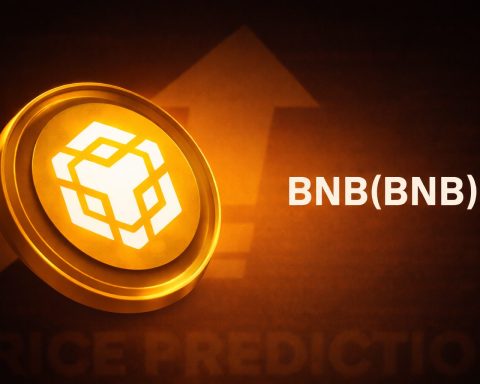Nvidia stock (NASDAQ: NVDA) is having a volatile session on Tuesday, November 25, 2025, as investors weigh blockbuster AI earnings against fresh competitive worries from Google and Meta.
After sliding sharply in premarket trade on reports that Meta Platforms may shift some AI workloads to Google’s custom chips, NVDA has climbed back into positive territory intraday, recently changing hands around $182.55, up roughly 2% on the day based on real-time quotes. [1]
That bounce comes less than a week after Nvidia reported record quarterly revenue of $57 billion, up 62% year over year, driven largely by its data-center AI business. [2] Wall Street has responded by lifting price targets, and the current analyst median 12‑month target around $257 still implies roughly 40% upside from today’s levels. [3]
Note: Prices and valuation metrics in this article are as of midday on November 25, 2025 and may change as markets move. This article is for information only and is not financial advice.
Key takeaways for NVDA stock today
- Intraday recovery: NVDA fell about 4% in premarket trading on Meta–Google chip headlines but was recently up around 2% near $182.55 as buyers stepped back in. [4]
- Fresh competitive threat: Reports that Meta may deploy Google’s tensor processing units (TPUs) from 2027 and rent them via Google Cloud as soon as next year have revived worries about Nvidia’s AI chip dominance. [5]
- Fundamentals still on fire: Nvidia just posted Q3 FY26 revenue of $57.0B, with data-center revenue at $51.2B, both up more than 60% year over year, and guided to $65B in revenue next quarter. [6]
- Analysts remain overwhelmingly bullish: The median 12‑month price target near $257 implies ~40% upside, with most of the ~40 covering analysts rating NVDA a “Buy” or “Strong Buy.” [7]
- Valuation still rich: NVDA trades on a trailing P/E in the mid‑40s and a forward P/E in the low‑ to mid‑20s, depending on the estimate, leaving little room for error if AI growth slows. [8]
Nvidia stock price today: a volatile reaction to AI chip headlines
Nvidia shares have been on a rollercoaster throughout November, and Tuesday is no exception.
Before the opening bell, NVDA fell roughly 3–4% after The Information reported that Meta is considering using Google’s TPUs in future data centers, with premarket commentary from CNBC and financial outlets amplifying concerns that hyperscalers may increasingly diversify away from Nvidia’s GPUs. [9]
The same report suggested Meta could begin renting TPUs via Google Cloud as soon as 2026, and potentially deploy them in its own facilities starting in 2027, putting a multi‑billion‑dollar slice of future AI infrastructure spending in play. [10]
By midday, however, the picture looked very different. Real‑time quotes from Investing.com show NVDA up about 2% to $182.55, making it one of the most actively traded stocks in the market today. [11] Alphabet (Google’s parent) and Meta, by contrast, are both up strongly on the news, with Alphabet shares gaining more than 6% and Meta over 3%. [12]
Even after recent pullbacks, Nvidia’s valuation remains enormous: data from YCharts and Yahoo Finance put the company’s market capitalization around $4.3–4.4 trillion, keeping it among the most valuable publicly traded companies on the planet. [13]
Meta–Google chips: why the market cares
The Meta–Google chip story hits investors in three sensitive places:
- Customer concentration risk
Nvidia’s data‑center business is heavily exposed to a handful of hyperscale customers—names like Meta, Alphabet, Microsoft, Amazon and Oracle. A decision by Meta to meaningfully shift workloads to Google’s TPUs would underscore the risk that big customers can become big competitors. [14] - Custom silicon vs. Nvidia’s moat
Google has been shipping and iterating on TPUs for years, tailoring them for AI training and inference in its cloud. Analysts note that these chips can be highly efficient for certain workloads, especially when tightly integrated with Google’s infrastructure. [15]
The fear is that as in‑house and custom accelerators improve, they could chip away at Nvidia’s sky‑high share of the AI accelerator market. - Valuation sensitivity
When a stock trades on a P/E north of 40x and price‑to‑sales above 20x, even small changes in the long‑term growth narrative can have outsized price impact. [16]
That said, the intraday rebound in NVDA suggests many investors still see the Meta–Google news as incremental competition rather than a thesis‑breaker—at least for now.
Earnings recap: Nvidia’s AI engine is still running hot
The competitive headlines are landing just days after Nvidia released another blowout quarter.
On November 19, 2025, Nvidia reported results for its third quarter of fiscal 2026 (ended October 26, 2025): [17]
- Total revenue: $57.0 billion,
- +22% quarter over quarter
- +62% year over year
- Data Center revenue: $51.2 billion,
- +25% Q/Q
- +66% Y/Y
- GAAP and non‑GAAP EPS: $1.30 per diluted share
- Gross margin: ~73–74%, already extremely high by semiconductor standards
For the current quarter (Q4 FY26), Nvidia guided to $65.0 billion in revenue (±2%) and even higher gross margins, signaling management’s confidence that AI demand remains robust. [18]
The company also highlighted a long list of big‑ticket AI infrastructure projects, including:
- Large deployments with OpenAI, Microsoft, Oracle and xAI
- Plans to accelerate multiple new AI supercomputers, including U.S. Department of Energy systems using tens of thousands of Blackwell GPUs
- International “sovereign AI” partnerships with governments and telecoms in Saudi Arabia, the U.K., South Korea and Germany, among others [19]
In short, Nvidia is signaling that demand for its AI platforms remains sold out and that the build‑out of global AI infrastructure is still in an early phase.
Wall Street’s view: still a “Strong Buy” story
If you zoom out from today’s volatility, Wall Street’s stance on Nvidia remains decisively positive.
- Price targets rising: After Q3 earnings, firms including Morningstar, Jefferies, Truist and Melius Research all raised their NVDA price targets, with new ranges spanning roughly $240 to $320 per share. [20]
- Big upside implied: A roundup by 24/7 Wall St reports a median 12‑month price target of about $257.26, implying roughly 41% upside from current prices, with 39 “Buy” ratings, one “Hold,” and one “Sell.” [21]
- Consensus “Strong Buy”: Data aggregators like StockAnalysis and MarketBeat similarly show an average target in the mid‑$240s to mid‑$250s and a consensus “Strong Buy” rating from dozens of analysts. [22]
More recently, Raymond James reiterated its “Strong Buy” rating with a $272 price target, explicitly backing Nvidia after the company issued a detailed memo rebutting high‑profile fraud allegations. [23]
According to that analysis, Nvidia’s memo emphasized that:
- It does not use special‑purpose vehicles or vendor financing to inflate revenue.
- Strategic investments tied to customers represent a small single‑digit percentage of revenue, not the majority.
- The firm generated more than $23 billion in operating cash flow and over $22 billion in free cash flow in the latest quarter, underscoring the underlying cash‑generating power of the business. [24]
Together, these points have helped many institutional investors treat the fraud claims as noise rather than a core risk, though they do highlight how much scrutiny now surrounds Nvidia’s meteoric growth.
Valuation check: priced for perfection?
Even bulls admit that Nvidia is not cheap.
Recent valuation snapshots show:
- Trailing P/E: roughly 45x, based on a price near $182.55 and trailing 12‑month EPS just above $4. [25]
- Forward P/E: estimates vary, but several data providers put it in the low‑ to mid‑20s, assuming Nvidia can continue to compound earnings at a very high rate. [26]
- Price‑to‑sales (ttm): about 23.5x, far above most other semiconductor names. [27]
Some analysts argue that such multiples are justified if Nvidia remains the de facto operating system of AI infrastructure and continues to grow revenue at 30%+ annually for years. Others warn that at these levels, any disappointment—whether from competition, regulation, or slower AI capex—could lead to sharp drawdowns. [28]
The options market around last week’s earnings hinted at this tension: estimates suggested Nvidia’s valuation could swing by roughly 6–7% in either direction, or about $280–300 billion in market cap, on a single earnings release. [29]
Shifting sentiment: from “AI euphoria” to “show me”
Beyond fundamentals and valuations, there are subtle shifts in investor behavior worth noting:
- High‑profile rotation: A recent filing analysis shows billionaire Peter Thiel’s fund sold its entire 538,000‑share Nvidia position in Q3 2025, along with a large Tesla sale, while initiating positions in more defensive names like Apple and Microsoft. [30]
- Bubble debate: Commentators from major outlets and independent research platforms continue to debate whether AI‑linked stocks are in a bubble, even as Nvidia’s management insists that demand is durable and older A100‑class chips are still running at high utilization. [31]
On the flip side, research pieces published today emphasize “sovereign AI”—national or regional AI infrastructure projects—as a new, multi‑year growth leg for Nvidia, with authors projecting massive long‑term free‑cash‑flow potential if those investments scale. [32]
In other words, the story has evolved from simple AI euphoria to a more nuanced “show me” phase, where every earnings report and major customer decision can move hundreds of billions of dollars in market value.
What to watch next for NVDA
For investors following NVDA over the coming weeks and months, several catalysts and risk factors stand out:
- How Meta and other hyperscalers actually allocate spending
Headlines about TPUs and custom silicon matter, but the real question is the mix of capex between Nvidia, internal chips and other vendors like AMD over the next 2–3 years. [33] - Execution on Blackwell and Rubin roadmaps
Nvidia’s ability to ramp its Blackwell and upcoming Rubin architectures at scale—on time and at attractive margins—will be critical to maintaining its performance and efficiency lead in AI computing. [34] - Regulatory and power‑grid constraints
Analysts are increasingly focused on power availability, data‑center permitting, and global trade risks, which could slow deployment even if demand remains strong. [35] - Macro conditions and interest rates
With AI leaders now among the largest components of major indices, any shift in rate‑cut expectations or risk appetite can magnify moves in Nvidia’s share price. [36]
Bottom line on NVDA stock today
On November 25, 2025, Nvidia is trading like what it has become:
a $4‑plus‑trillion AI infrastructure giant whose every headline rewrites expectations.
- The Meta–Google TPU story has reminded markets that Nvidia’s dominance is not unchallenged.
- The earnings and guidance remind everyone why it’s still the name to beat in AI chips.
- And Wall Street’s price targets and “Strong Buy” ratings show that, for now, the long‑term growth story still outweighs short‑term competitive jitters. [37]
For traders, that means continued volatility.
For longer‑term investors, the question is whether Nvidia can keep executing well enough in AI, data centers and sovereign AI projects to grow into its premium valuation.
Anyone considering NVDA should weigh that upside against concentration risk, competitive threats and the possibility that AI spending simply grows more slowly than the market currently expects—and should consider consulting a licensed financial advisor before making investment decisions.
References
1. www.investing.com, 2. investor.nvidia.com, 3. 247wallst.com, 4. www.investopedia.com, 5. www.investopedia.com, 6. investor.nvidia.com, 7. 247wallst.com, 8. www.financecharts.com, 9. www.investopedia.com, 10. www.investing.com, 11. www.investing.com, 12. www.investing.com, 13. ycharts.com, 14. www.investopedia.com, 15. www.investing.com, 16. www.financecharts.com, 17. investor.nvidia.com, 18. investor.nvidia.com, 19. investor.nvidia.com, 20. www.businessinsider.com, 21. 247wallst.com, 22. stockanalysis.com, 23. www.investing.com, 24. www.investing.com, 25. www.financecharts.com, 26. finance.yahoo.com, 27. finance.yahoo.com, 28. seekingalpha.com, 29. www.ft.com, 30. coincentral.com, 31. seekingalpha.com, 32. seekingalpha.com, 33. www.investing.com, 34. investor.nvidia.com, 35. www.investing.com, 36. www.investopedia.com, 37. 247wallst.com







